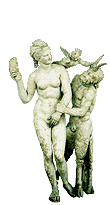1. Summary
Laiv is a leisure activity that is organised and practiced by a network of involved people in Norway. They usually have a middle class background, and are between 16-40 years of age. From time to time, groups of players organise unique plays that they take part in. These plays last from a couple of hours up to a week. They take place in a geographical location that is selected in advance by organisers. The plays are about simulating a make-believe setting, which has its own characters, conflicts and dramatic events, culture, and background history. People who are acting together, or communicating with each other, always do this in the context of a specific definition of a situation. My research question is to look at how the laiv players make and maintain their play situation. A definition of a situation implies a variety of structures that influence the interaction of the participants. The participants of the situation act in accordance to a set of roles, as well as a normative background that regulates what one should and should not do. These structures also include the background information that one uses when interpreting the meaning of the actions of others. In other words, the study of the process by which a situation is defined is a study of the process by which the social reality becomes structured. Researchers that study this topic have focused on the relation between general structures – in the form of shared conventions and knowledge, habits and so on – and particular actions that are done in unique contexts of interaction.
This study takes an ethnographic approach to this question, with analysis of interviews, observations, and internet texts being the primary method. To play, each of the players is assigned a character in advance. The players emphasise a ‘realistic’ resemblance of physical traits, in order to play the character. Maybe this makes it easier to communicate a character. Nevertheless, players are usually capable of ignoring a lack of resemblance in relation to such traits as height and physical build. Then they increase their ability to structure play in the way they want. External influence from the surrounding culture makes it difficult to ignore lack of resemblance to some traits such as gender and ethnicity. Some players may lose their involvement in play, or one may risk that players become too involved and fail to separate play from ‘real life’, or actions in play may develop in such a way that play cannot continue. The play situation can then break down for these and other players. The players have a repertoire of techniques to handle this. The play may be stopped, the problematic events sorted out, and then the play can be restarted. Another way is by accepting the performance of one’s co-players, without scrutinising or denying any inconsistencies. This also greatly decreases their need for communicating details.
On the one hand, the players and organisers use a variety of preparations and rehearsals in advance of play in order to shape their actions in play. On the other hand, this rarely determines actions completely, leaving considerable room for improvisatory action during play. When improvising, the performance becomes more stereotypic, and this is less ‘realistic’ in some players’ eyes.
The players try to have a visual similarity between their material world and the material world in play, and they select and shape their objects and surroundings to achieve such similarity. They are limited by their resources when doing so, but they are capable of ignoring inconsistencies that are impractical to fix. Material objects and surroundings have communicative effects on play in terms of their being shared symbolic signs, and in terms of their physical effects. Players use both of these to communicate the situation of play itself, and to make distinctions in play clearer.
To sum up, the process of making and maintaining a definition of a situation involves both using pre-existing structures - in the form of general conventions and particular knowledge of and habits in a situation that are learned and rehearsed in advance - and the use of techniques actively to shape and maintain the situation when acting during play. There is a close relationship between the pre-existing structures and action in context in the process of making and maintaining the play situation. This is particularly clear in five ways throughout the text. First, the players have a great capability of adapting the process of making and maintaining a situation to the demands and possibilities of the particular context of action. Second, the use of conventions that exist in advance of play are intertwined with the interaction in the context of performance. Third, at several places one sees clearly how action is both structured according to pre-existing structure, while simultaneously structuring future action. Fourth, the material environment are a given structure constantly intertwined in the context of performance. Fifth, looking at how the definition of the situation can break down, provides information about the relation between the general conventions of play and the demands of the context of performance.

